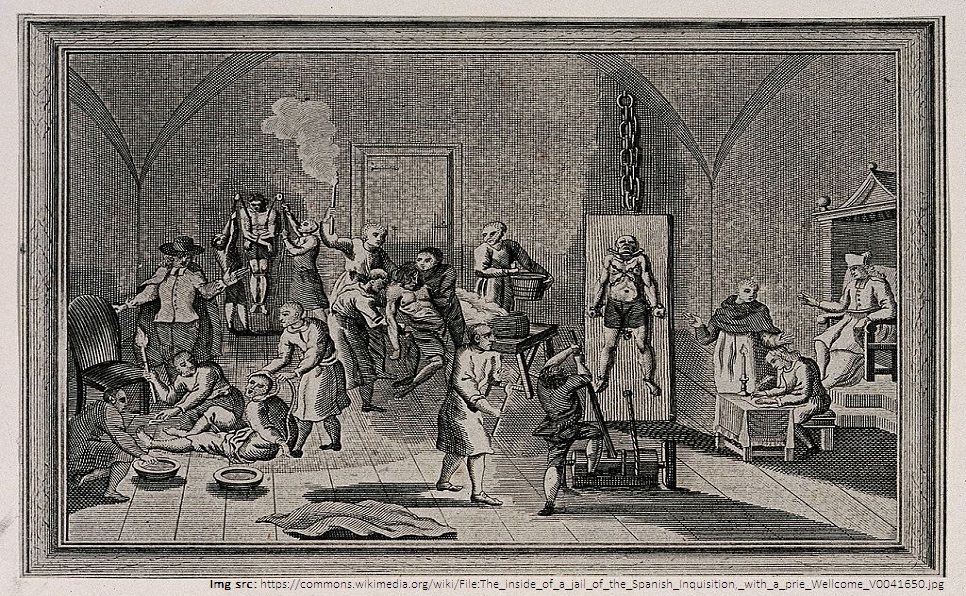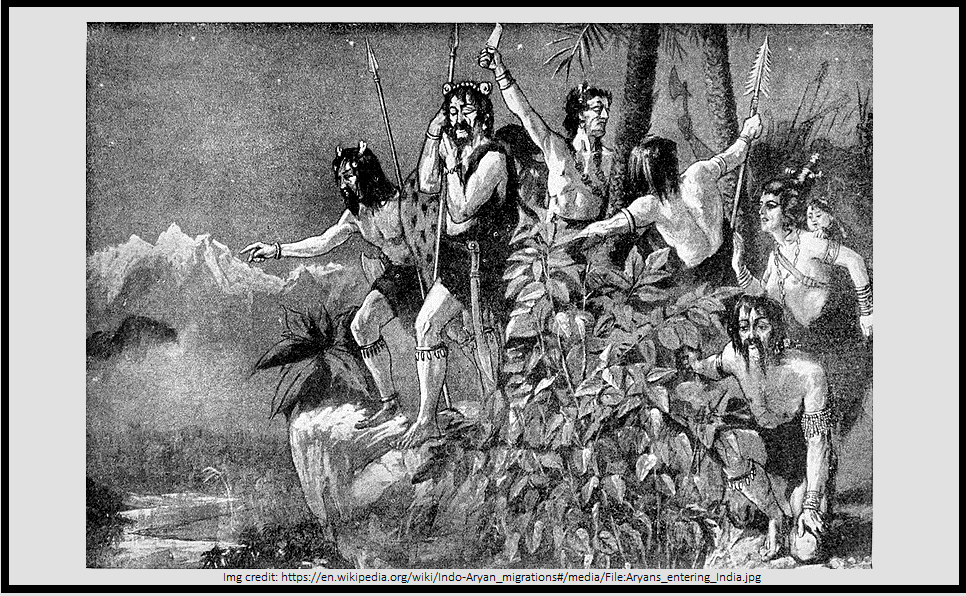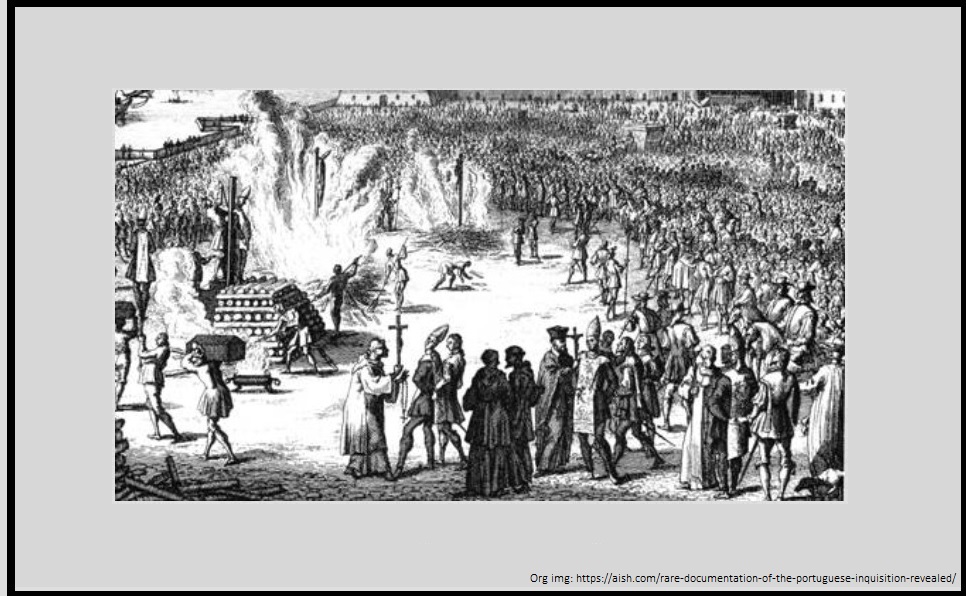The Spanish Inquisition Inquisition had some influence on Goa Inquisition in terms of legal procedures and religious conversion efforts. However, it is important to note that the Goa Inquisition with its other characteristics had surpassed both the Spanish Inquisition and Portugal Inquisition in terms of severity. The Spanish inquisition was established in 1478 during the reign of Ferdinand and Isabella and was abolished in 1808. The background for the establishment of the Spanish Inquisition dates back to 13th century. At that time, with the active cooperation of Church and state, a ruthless machinery of systematic persecution of people considered as heretics had evolved in Europe.
In Spain, during the 13th century, the Jewish community occupied the foremost positions in many fields – trade, scholarship and politics. This provoked the envy of their Christian brethren. They spread malicious rumors and false/defamatory remarks against Jews and succeeded in inciting the crowds to do indiscriminate massacres and pillage against Jews. The clergy circulated stories regarding the contempt for the Catholic worship, disrespect of its most holy symbols or sacrifice of Christian children, at the celebration of Jewish Festival of Passover. This resulted in an indiscriminate massacre with the fanatic population assaulting Jews in the kingdom of Castile and Aragon. The perpetrators broke into houses, violated their most private sanctuaries and scattered their costly collections and furniture. In this crisis, many Jews were forced to embrace Christianity, as this was the only way to save their life and property.
Establishment of Inquisition
The converted Jews remained loyal to their old faith at heart and practiced the rites and rituals associated with their old religion in secret. To remedy this, there were loud and persistent demands for the establishment of the Inquisition. Foremost among those pressing for the demand of inquisition were the ‘prior of the Monastery of St.Paul’ in Savelle and ‘Assistant of Seville’ (Spanish city). They were also supported by the papal nuncio (diplomatic representative of the pope) then residing at the Court of Castile. They proposed that the introduction.of the holy office was the only effective means of detaching the converted Jews from their old faith and rituals. They also promised Ferdinand a scheme which gave an ample source of revenue in the confiscations involving the holy office.
But it was not so easy to get consent from Isabella because of her natural benevolence and magnanimity. After repeated persistence of the clergy, seconded by the arguments of Ferdinand, she consented for introduction of the holy office (commission against heresy within the catholic church) into Castile. Owing to her natural aversion for the abuses to which the Inquisition would lead, the queen postponed action on the authority given to her for some time, and as an alternative proposed to educate the new converts into the tenets of the Christian faith. However, ultimately, the Royal couple had to give their consent to the establishment of the Inquisition and the Tribunal started operations on January 2, 1481.
Within four days of its establishment there took place the first burning of heretics in which four persons were burnt to death. During 1481, about 300 persons were condemned to be burnt at the stake in Seville (Spanish city) and 80 to imprisonment for life. In the rest of the province and the bishopric (office of bishop) of Cadiz (Spanish city), 2000 persons were condemned to be burnt to death, and 17000 others were given diverse penalties.
Order for banishment of Jews
In 1483, the pope appointed Torquemada as the Inquisitor General of Castile and Aragon. Torquemada, was a Dominican monk and the confessor to Isabella since her childhood. He was assigned the task of preparing a new constitution of the Inquisition. This new constitution on Inquisition came into effect in October 1484.
Under this new constitution, many Jews and new converts escaped to neighboring territories like France, Italy and Africa in order to escape the terror of the Spanish Inquisition. However, many preferred to take the risk and remain in Spain because of strong attachment to their land of birth, their people or their property. The Jews offered to pay 80,000 ducats (currency in use at that time) to Ferdinand for the privilege of being allowed to remain in the country on any terms. Ferdinandand and Isabella were inclined to accept this offer. However, Torquemada succeeded in changing their mind.
On March 81, 1492 an order for the banishment of Jews from the Kingdom was passed. They were given four months to wind up their things and leave the country. Jews who failed to do so would be liable to capital punishment and their property confiscated. Even conversion to Christianity did not mean security against the unkind attentions of the Inquisition.
Those who remained after that date incurred the death penalty and confiscation of their entire property to the royal treasury. They were allowed to export their wealth and substance, with the exception of gold, silver, or other articles prohibited by law. The Jews had to dispose of their valuable belongings for very cheap prices. Valuable plots of land were sold for a few pieces of cloth, fine houses were exchanged for a couple of mules, and in many cases the riches of the Israelites melted away and what remained with them were the few articles, which they could carry with them, and the animals, which were to transport them. Moreover, the convents and public institutions, the nobles and persons of every class had taken debts from Jews and no provision was made for the collection of the debts becoming due to them after the date of their enforced departure. Their losses from this source were huge. Some of them amid tears and lamentations removed many of the tomb-stones of their fathers, and carried them with them in their long wanderings. This order resulted in 160,000 Jews being expelled from Spain.
The fate of the exiles was varied in the different lands where they sought refuge. Those who escaped to Morocco and Algiers found an inhospitable reception. Many were sold into slavery, some starved to death and some were ripped open in the hopes of finding gold pieces in their bodies. Few preferred to return to Spain and receive baptism. In Turkey they were well received. The major part emigrated to Portugal, the noble Rabbi Isaac Aboab having obtained permission of king John II to enter the country, though on a condition that each immigrant pays a capitation tax and understanding that within eight months they should leave the country. These Jews would later face inquisition in Portugal.
Penalties for heresy
The penalties enforced on heretics during the spanish inquistion varied depending on the severity of offense ranging from moderate to harsh. Some of the punishments enforced on heretics are as under. It is important these are not to be confused with torture methods such as the garrucha or pulleys, the water-torture etc.
Burning alive: Though the death sentence was practiced by the inquisition, death by burning alive was very rare and was used only during the initial years of spanish inquisition.
Scourging (lashing): This was a favorite penalty which was lavishly and often mercilessly employed during the spanish inquisition. The usual number of lashes prescribed was two hundred, though in occasional cases a hundred sufficed. The next day the culprit was stripped to the waist, mounted astride of asses and paraded through the streets.
Verguenza, or shame: This penalty was the same as Scourging with lashes omitted. The culprit was bared to the waist and paraded through the streets. It was naturally regarded as less severe than scourging and was sometimes substituted for the latter, when the culprit was too aged or feeble to endure the lash.
Mordaza: The mordaza or gag was a torture device to prevent someone from speaking. This was sometimes used in scourging and verguenza, when the culprit was a hardened blasphemer or likely in some way to create scandal. It was also used on heretics for whom it was feared that they would influence those not firm in the faith.
Galleys: Enslavement in the galleys (a type of ship) to labor at the oar (propelling part of a galley) was one of the most severe punishments for culprits during the spanish inquisition. The galley propelled by oars is equivalent to the modern battle-ship and prisoners had to man the galleys. For women, the equivalent of the galleys was service without pay in hospitals, houses of correction and similar institutions.
Perpetual prison: Imprisonment for life was the penance imposed on the heretic, who after persuasion, sought reconciliation to the Church.The terms of imprisonment were frequently shortened sometimes from humane motives but mostly from financial considerations
Exile: Another punishment that was used during the spanish inquistion was exile. The culprit was sentenced to leave the territory. The length of exile was always specified, and varied from some months to a life-time, but it usually was a term of a few years.
Severity of Spanish inquistion
Despite all its evil, historians and experts agree that the Spanish inquisition was less severe compared to the subsequent Portugal inquisition and later Goa Inquisition. Renowned Historian HC Lea mentions:
The system was evil in conception and in execution, but the Spanish Inquisition, at least, was not responsible for its introduction and, as a rule, was less cruel than the secular courts in its application, and confined itself more strictly to a few well-known methods. In fact, we may reasonably assume that its use of torture was less frequent.
Reference:
The Goa Inquisition – The terrible tribunal for the East – A K Priolkar
A History of the Inquistion of Spain – H. C. Lea


